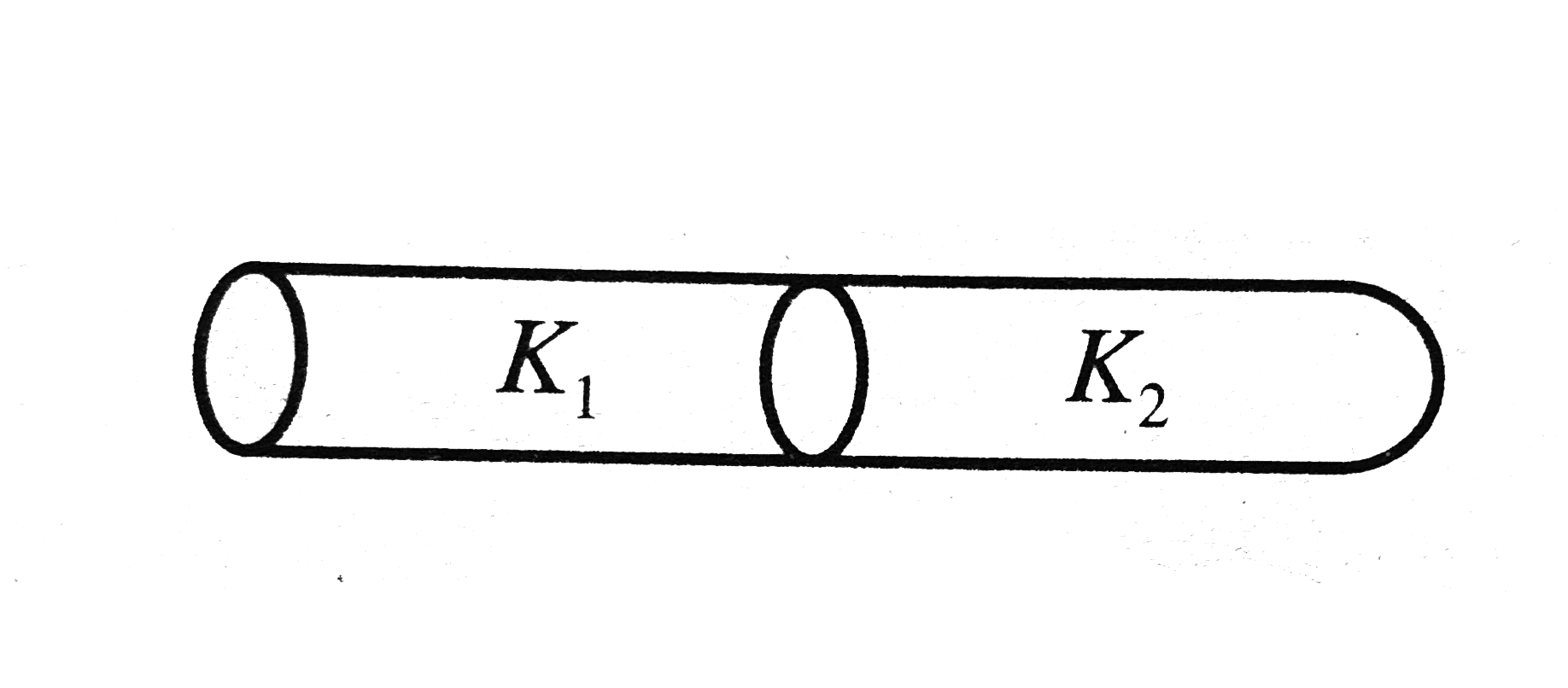Three metal rods of same lenghs and same area of cross sections having conductivities 1,2,3, units are connected in series Then their effective conductivity will be .
2 units
1.6 units
2.4 units
2.8 units
The correct Answer is:B
Reff=R1+R2+R3
l1+l2+l3Keff=l1K1+l2K2+l3K3 .
Topper's Solved these Questions
Similar Questions
Knowledge Check
The metal rods of same length and same area of cross-section are connected in series. If their condcutivites are 120Wm−1and240Wm−1K−1 the effective conductivity of the combination is
A150Wm−1 K−1B160Wm−1 K−1C180Wm−1 K−1D80Wm−1 K−1Two metallic rods are connected in series. Both are of same material of same length and same area of cross-section. If the conductivity of each rod be k, then what will be the conductivity of the combination ?
A4 kB2 kCkDk/2n conducting wires of same dimensions but having resistivities 1,2,3,….n are connected is series. The equivalent resistivity of the combination is
An(n+1)2Bn+12Cn+12nD2nn+1
Two rods of the same length and diameter having thermal conductivities K1 and K2 are joined in parallel. The equivalent thermal conductivity of combination is
View SolutionTwo rods of the same length and diameter having thermal conductivities K1 and K2 are joined in parallel. The equivalent thermal conductivity of combination is
View SolutionThree metal rods of same length and same cross - sectional area are connected in parallel. If their conductivities area 70, 110, 180 Wm−1K−1 respectively, the effective conductivity (in Wm−1K−1) of the combination is
View Solutionn conducting wires of same dimensions but having resistivities 1,2,3,….n are connected is series. The equivalent resistivity of the combination is
View Solution Statement I: Two solid cylindrical rods of identical size and different thermal conductivity K1 and K2 are connected in series. Then the equivalent thermal conductivity of two rods system is less than that value of thermal conductivity of either rod.
Statement I: Two solid cylindrical rods of identical size and different thermal conductivity K1 and K2 are connected in series. Then the equivalent thermal conductivity of two rods system is less than that value of thermal conductivity of either rod.
Statement II: For two cylindrical rods of identical size and different thermal conductivity K1 and K2 connected in series, the equivalent thermal conductivity K is given by 2K=1K1+1K2
View Solution

